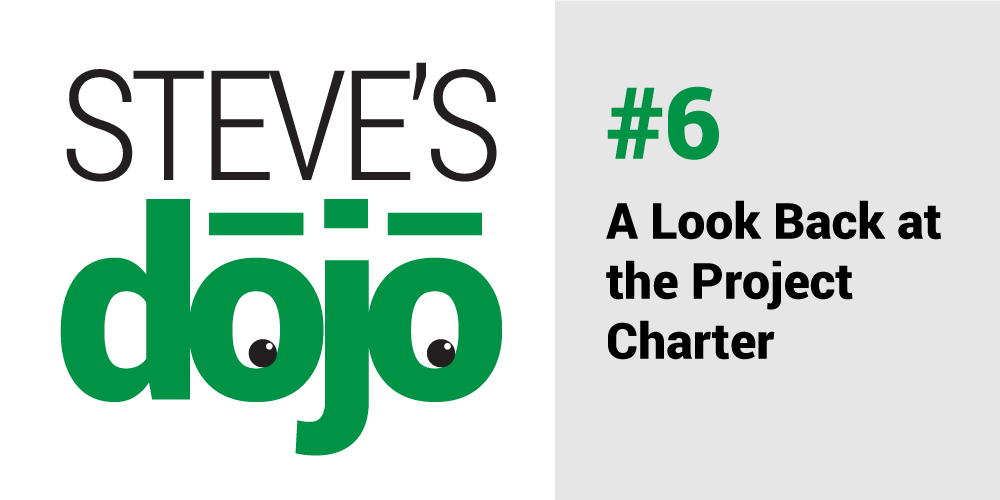the beginning there was the project charter. And it was good.
- How did you know it was good?
- Because look at it. It’s 2½ pages with a serif font. It has bullets AND a table. Its gotta be good.
And so it was written: The dawn of each value improvement effort shall be heralded with a flourishing preamble penned by a righteous facilitator, called forth to guide talent from across the enterprise to elucidate their purpose. Team members would be recruited. Background statements would be crafted. Goals would be parsed from objectives. Scopes would be… scoped. And finally, after multitudes of meetings and revisions, the fruits of their labor… the Project Charter… though worthy of framing, would be filed away and forgotten.
- If it was so great, why just file it away?
- Because it was done.
- The project was done?
- No, just the charter.
- What about the project work? What about results?
- That part’s next.
And as the sun set on the bold and courageous effort, the project liege would chronicle their adventures in PowerPoint and recount their gallantry by projector light. The delivery was sonorous; the bullets, florid; and the megabytes, plentiful. At the close of questions, an ovation would erupt. “Send me your slides!” they would cry.
- “aaand scene.”
That was a dramatic retelling of actual history. Here’s the plain version.
As recently as 2013 we asked value improvement facilitators to develop a “charter-lite,” a truncated version of the classic charter. Class participants were taught that the charter was an agreement among active project stakeholders, a sort of constitution for your project. Once completed, it was rarely consulted. Then the team would do a bunch of work (or not) and at the end of the project, record their work in PowerPoint. And it turns out you can hide a lot of non-work in a charismatically delivered PowerPoint presentation.
The charter-lite was replaced by the more economic and much more useful value summary. Charters are still appropriate for some projects such as major IT installations or capital improvements. (Charisma and PowerPoint have their places too.)
For value improvement work we use the value summary because it guides a team through the methodology. It demands SMART goals, demands evidence that they used appropriate LSS tools in the baseline analysis and investigation phases and later, appropriate tools in the improvement design phase, and finally it demands monitoring data. It also ties value improvement progress to financial impact and rolls it all up to our enterprise strategic goals.
Steve Johnson
Hospitalist Ryan Murphy introduces quality improvement (QI): The systematic and continuous approach to improvement.
Improvement science is about making everyday tasks easier and faster. This week, Steve uses the 6-phase value improvement methodology to build a highly-reliable morning routine.
This week, Steve describes a genius (yet simple) data collection tool: the check sheet. Colline Prasad and the SSTU nursing team used check sheets in their work reducing call lights, a project that turned out to be a triple-win; an intervention that improved patient perception of responsiveness, increased patient safety, and decreased nurse distraction.
